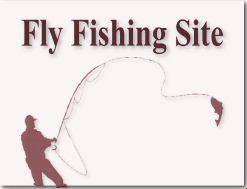|
|
ARTICLE
10
|
Fly Fishing Basics
Fly Fishing Tips: Fly Tying Fly fishing is popular sport enjoyed all over the world. It is an ancient angling method that involves the use of artificial baits called fly that imitates insects and small animals. Equipment The fly line is made of a tapered plastic coating over braided Dacron or nylon core and used to hold the hook. Careful choice of fly line is very important to optimize catch. Fly lines either sink or float. Different kinds of fly lines are used for fresh water, salt water, cold or hot climate. The fly line is cast into the water with the use of a fly rod. The fly rod must match the weight of the fly line to gain efficiency. Fly rods used in salt water have anti-corrosive coatings. When a fish is caught, it tries to resists and get away by dragging the line. The use of the reel greatly helps in taking the fish out of the water. The fly reel is a mechanical device that helps the angler drag the hooked fish. There are three kinds of reels namely: single action, multiplier and automatic. Fly Tying Flying tying is very important skill to master. It may seem simple, but an in-depth knowledge on its arts and science can greatly increase efficiency and catch as well as save on cost of wasted flies. The hook holds the fur, hair or feathers used to create a fly. Choosing the right hook is the saves you from having a flawed fly. Choose your hook according to use. The five kinds of flies are the dry fly, wet fly, terrestrial fly, streamer fly and nymph fly. But a good quality fly vise that can hold a variety of hook sizes and shapes. The fly vise is the most important tool in fly tying. One of the nice features in fly vise is having head that pivot or rotate. Try to avoid buying a vise that takes a lot of time to adjust to a specific hook. Try to have the following essential tools in your fly fishing toolbox: bobbin, scissor, pliers, bodkin, Hackle guards and bullet head tools. Fly Casting Flying casting has different methods depending on the situation. Common types of casting include forward casting, roll casting, truck casting, single and double haul casting and curve casting. Accuracy and distance in relation to wind and current directions is very a very important aspect to consider. Removing the slack prior to beginning the cast can add efficiency in moving the line through the air on both forward and back casts. Longer cast stroke can smooth out the cast and minimize tailing loops. Smooth casters make good fly fishers. Make smooth forward and back casts with equal timing as timing is key. Practice Makes Perfect As in everything we do, constant and persistent practice makes us good at our stuff. Sign up with fly fishing clubs and learn new techniques from them. Buy and read books and apply the tips. Try experimenting with your own techniques but be sure you have enough money to cover extra flies and equipment you might break. |


